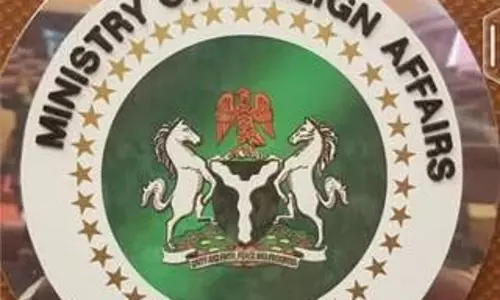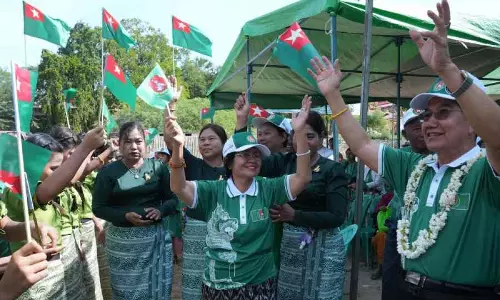
FIFA report indicates upward trend in Women's football
text_fieldsAccording to a recent poll by the organisation that governs football, women's football is experiencing rising earnings from sponsorships, broadcast agreements, and merchandise on a global scale, as well as rising fan enthusiasm.
In preparation for the Women's World Cup in Australia and New Zealand next summer, FIFA released its second benchmarking report on women's football on Friday.
Building on the initial benchmarking report published last year, the organisation evaluated 30 of the biggest leagues and 294 clubs.
The most recent study discovered growth across the board from matchday, broadcast, commercial, and prize money sources, although COVID-19 had an influence on club revenue in the previous report. Clubs reported a 33% increase in commercial revenue year over year, showing increased sponsorship interest. A title sponsor was reported to be present in 77% of leagues, up from 11% in 2021.
Revenue from broadcasting increased 22% from the previous year. In contrast to the previous survey's nine leagues, ten leagues reported broadcast revenue.
There is, however, room for improvement. Only 7% of teams worldwide reported earning more than $1 million in the match, broadcast, commercial, and prize money, according to the survey, Associated Press reported.
The analysis shows that investing in women's football is a wise decision, according to Sarai Bareman, FIFA's chief women's football officer.
"The changes are clear in the second edition of the report. We know it, we feel it," she said. "And for me, it's just getting those people that are involved, particularly in the highest levels of our game all around the world, to see and understand the opportunity that sits in front of them. It's facts and data that are often the things that appeal to those people. ... It's not anecdotal anymore. It's here on paper."
Unprecedented interest in the sport has accompanied the structural growth of women's football. At Wembley, a friendly between the United States and England drew close to 78,000 spectators and sold out in less than a day.
50,000 spectators saw the recent Women's Africa Cup of Nations final between South Africa and Morocco, and 91,000 people attended a UEFA Champions League quarterfinal game at Camp Nou.
"Woman's football is on a growth trajectory unlike any other sport in this world. It's the biggest growth opportunity that FIFA as an organization have today but more importantly, our sport, football, has today. It's the biggest growth opportunity there is. And you don't have to look too far back to see the indicators of that growth," Bareman said.
The Women's World Cup will feature 32 teams, an increase from the previous two championships' 24 teams, reflecting the expansion of the sport. This has made it possible for new participants from countries including Morocco, the Philippines, Ireland, Vietnam, and Zambia.
FIFA's poll, however, also comes at a challenging time for the sport. A recent investigation in the US revealed widespread abuse and misbehaviour in the National Women's Soccer League, the top professional division of the sport in the nation.
After North Carolina Courage coach Paul Riley was fired last year after two former players accused him of sexual harassment and coercion in an article published in The Athletic last autumn, U.S. football ordered an inquiry. In the NWSL last season, five of the ten coaches were either let go or resigned due to misconduct.
The Women's World Cup will feature 32 teams, an increase from the previous two championships' 24 teams, reflecting the expansion of the sport. This has made it possible for new participants from countries including Morocco, the Philippines, Ireland, Vietnam, and Zambia.
FIFA's poll, however, also comes at a challenging time for the sport. A recent investigation in the US revealed widespread abuse and misbehaviour in the National Women's Soccer League, the top professional division of the sport in the nation.
After North Carolina Courage coach Paul Riley was fired last year after two former players accused him of sexual harassment and coercion in an article published in The Athletic last autumn, U.S. football ordered an inquiry. In the NWSL last season, five of the ten coaches were either let go or resigned due to misconduct.
The FIFA safeguarding programme was implemented this summer in Costa Rica at the under-20 Women's World Cup. The initiative aims to protect participants and supporters from mistreatment, exploitation, and harassment.
A safety officer and a representative from Costa Rica's National Children's Institute worked the 32 games of the tournament. The abuse was explained to the participants, along with reporting procedures.
The FIFA Guardians initiative, which was unveiled after the 2019 Women's World Cup to guarantee player safety, includes the protection programme. The United Nations agency for children, UNICEF, collaborated on its development.
It will be in place for the senior World Cup in the coming summer.























